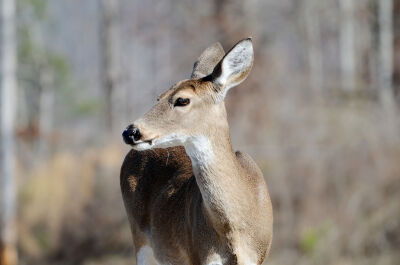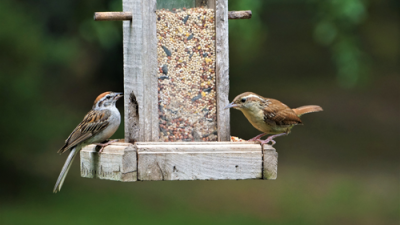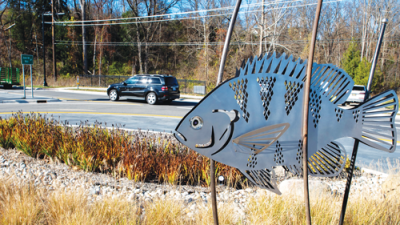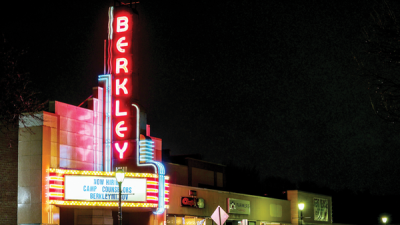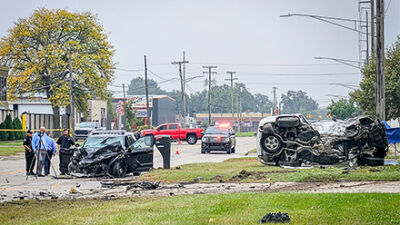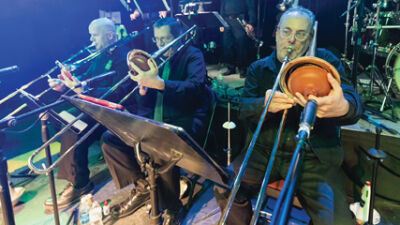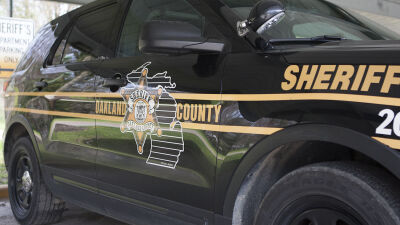AUBURN HILLS/ROCHESTER HILLS — Multiple local communities have taken a step toward trying to figure out what to do about the large number of deer roaming the region.
To address concerns, the Oakland County Community Deer Coalition was created in 2021 by a group of leaders in nine Oakland County communities, according to a press release.
The release states that, in recent years, the deer population has grown steadily throughout Oakland County, which has led to an increase in the number of deer-related auto accidents, damage to landscaping and private property, and greater potential for Lyme disease and other illnesses that can be spread by deer.
Farmington, Farmington Hills, West Bloomfield, Auburn Hills, Beverly Hills, Birmingham, Franklin, Rochester Hills and Southfield are all part of the coalition.
Over the past several years, Southeast Michigan Council of Governments Planning Director Kevin Vettraino said, cities and townships throughout Oakland County have received a rising number of calls and emails from concerned residents.
The coalition recently partnered with SEMCOG in an effort to come up with a regional solution to address the deer population. The coalition has also been working with the Michigan Department of Natural Resources to try to formulate a regional plan.
As a first step in the process of attempting to identify a solution, the coalition is conducting a deer survey of Oakland County residents and business owners to gather data. The survey can be completed through Nov. 11 by visiting cobaltcommunityresearch.org/deer.html.
Rochester Hills Mayor Bryan Barnett said the city has had an overpopulation of deer for a while now, adding that his team spends a lot of time working to address the issue.
In 2009, the city created the Deer Management Advisory Committee to review deer-related car crash statistics, as well as the city’s annual deer count surveys, and to make recommendations regarding the overpopulation of deer.
Each year, the city allocates approximately $10,400 to the committee, which organizes deer gardening programs, publishes educational materials and direct mail communication, and more, to keep residents vigilant. The city also places temporary electronic signs with the message “High Deer Crash Area, Use Caution” in deer hot spots across Rochester Hills.
Prior to the outbreak of epizootic hemorrhagic disease, or EHD, in deer last year, Rochester Hills was seeing an increase of deer during its aerial counts each winter, according to Matt Einheuser, the natural resources manager for the city of Rochester Hills.
“It was trending like our population was increasing; however, with EHD last year, we lost quite a few deer, and this past winter when we went up in the helicopter and did our counts, and when we looked at last year’s deer-vehicle collisions, we saw quite a big drop. That’s consistent with the last time we had EHD, about 10 years ago or so … but the population typically bounces back pretty quickly, so we’ll see in the next couple of years what happens,” he said.
Vettraino shared the kind of information that can be ascertained from the survey.
“Within the questions being asked, you’ll be able to provide a ZIP code, where we can get a better sense of where within the region we’re seeing more encounters; so that’s part of the survey,” he said. “Other part is, generally, getting a feeling from those who are taking the survey — do they like to see the deer? (In) some cases, they do. … It’s part of that mix between rural living with urban living. … Is that their feeling towards it, or have they had different instances where they feel it more on the nuisance end, (whether) that’s a crash, aggressive behavior, or interactions with pets — landscaping?”
Vettraino discussed the significance of residents taking time to complete the survey.
“Before we put in any recommendations through a plan or policies, we wanna get that voice from the residents,” he said. “That’s another reason why it’s important for folks to take the survey, to better represent how to move forward.”
Developing a plan, Stewart said, is likely the next step.
“I think it’s too early to say anything,” he said. “The next step is probably developing a plan. … I think it’s important to understand what each community is dealing with, maybe some of the challenges — whether it’s landscape damage, whether it’s deer-vehicle collisions; and then from that point you can customize your management approach to try to address the problems in each community, specifically.”
Rochester Hills, according to Einheuser, is already very familiar with the many challenges deer create within the city, but he said getting more information and data on the topic is always a good thing.
“We definitely encourage residents to fill out the survey, because that just provides us with more information we can use down the line in any decision making that needs to be done and in looking at the issues and maybe some innovative ideas that we can come up with.”
From Stewart’s perspective, a regional approach may be the only way of effectively solving the deer population issue.
“The problem that I think a lot of communities in Oakland County are experiencing is that so many of those communities are adjacent to one another,” he said. “They really need to be on the same page, in terms of their management approach or management decisions, because one community going sort of off on their own to try to resolve a problem might not have that much of an impact because the three surrounding communities have decided not to pursue any type of deer management, and now, because deer don’t recognize city boundaries, they’re gonna continue to move between communities, between cities. They might not have the full experience or benefit of the management program if other communities aren’t also involved.”
To access the survey, visit: www.cobaltcommunityresearch.org/deer.html. To learn more about deer safety or for information about gardening to deter deer, visit roch esterhills.org/deer or call (248) 656-4673.
 Publication select ▼
Publication select ▼